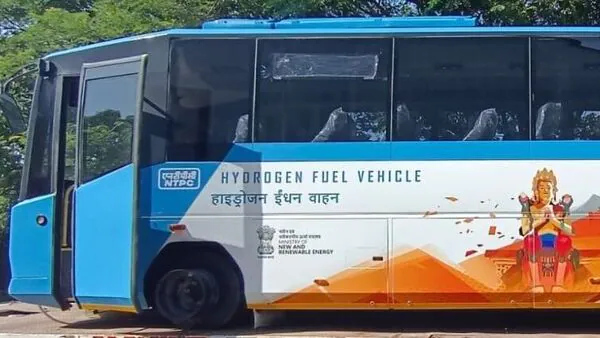A Green Milestone in High-Altitude Mobility
India has rolled out its first-ever hydrogen fuel-cell buses in Leh, Ladakh, marking a historic step in sustainable transport. Operated by NTPC, these buses showcase how clean technology can be harnessed even in extreme terrains. This project is also significant because it positions India at the forefront of hydrogen-based mobility in Asia.
Performance and Efficiency
Each bus can travel nearly 300 km on just 25 kg of hydrogen, offering a powerful alternative to diesel engines. In regions like Ladakh, where refueling infrastructure is limited and terrain is challenging, the buses demonstrate that green mobility can also be practical and reliable.
Hydrogen buses work on a fuel-cell mechanism—they generate electricity by combining hydrogen with oxygen, emitting only water vapor. This makes them a zero-emission solution perfectly suited for fragile ecosystems like Ladakh.
Exclusive to Ladakh—For Now
Currently, Ladakh is the only region where these buses are on the road. The location was strategically chosen as a testing ground for high-altitude green mobility. If successful, the model will be scaled across the country.
Under the National Green Hydrogen Mission, India plans to introduce hydrogen-powered transport on 10 major routes, including:
- Delhi – Agra Expressway
- Pune – Mumbai corridor
- Key metro-to-tourism links in Rajasthan and Himachal Pradesh
Climate Impact
The environmental benefits are massive:
- Each bus can help cut around 350 tonnes of CO₂ annually, replacing emissions that traditional diesel buses would generate.
- They produce oxygen equivalent to planting 13,000 trees, a fact that resonates strongly with climate activists and policymakers alike.
By deploying just 1,000 hydrogen buses nationwide, India could potentially offset 3,50,000 tonnes of CO₂ per year, making a significant dent in its emissions footprint.
Global and National Significance
This initiative strengthens India’s journey toward achieving net-zero by 2070. It also sets a global precedent: few countries have experimented with hydrogen mobility at such extreme altitudes. For India, it is not just a transport solution but a statement of technological capability and climate commitment.
Hydrogen buses also create a ripple effect for the green hydrogen economy:
- Boosting demand for hydrogen production.
- Encouraging investment in refueling stations.
- Supporting renewable energy integration through solar-hydrogen hubs.
A Roadmap for the Future
This project is more than just a pilot—it is a proof of concept that will shape the future of India’s mobility. NTPC has also set up a hydrogen refueling station powered by solar energy, ensuring that the entire cycle remains green.
By blending hydrogen with clean power, India is building a transport ecosystem that could be replicated globally. The government envisions hydrogen buses running alongside electric vehicles, offering complementary solutions for different terrains and distances.
FOR MORE BLOGS – beyondthepunchlines.com

 Add to favorites
Add to favorites








